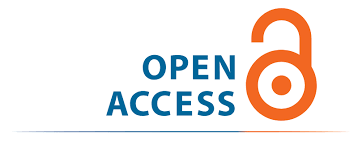Child Labor Exploitation in Bosnia and Herzegovina as a Form of Human Trafficking
Keywords:
human trafficking, exploitation, physical and psychological aspects of child interviewing, child labor, slavery, beggingAbstract
Reason for writing and research problem(s): This article refers to the phenomenon of trafficking for the purpose of labor exploitation, which has in Bosnia and Herzegovina been present for a long time, and includes traditional slavery, forced labor and debt bondage. The most common form of labor exploitation in Bosnia and Herzegovina are child beggars which the children of the Roma national minority are particularly exposed to. Human trafficking is a serious violation of human rights and seriously undermines the victim’s life long after the exploitation has stopped. This is the reason why this form of criminal activity deserves much more attention when it comes to the prevention and protection of the victims.
Aims of the paper (scientific and/or social): The research of the phenomenon of labor exploitation as a form of human trafficking, with the accent on young naive beings, is made in order to investigate and explain the social circumstances that prevent the development of human capabilities and put a human being in the position of slavery and exploitation. The general hypothesis was that the post-war living conditions, marked by different processes of transition, are crucial to the emergence and growth of labor exploitation of children as a form of human trafficking in Bosnia and Herzegovina, and this represents a serious social problem. The greatest risk factor for children’s labor exploitation stems from the underprivileged position of poor families, mainly caused by the war consequences. Children from these families are withdrawn from compulsory education and included in labor, which is even detrimental to their physical and psychological health, in order to create additional family income.
Methodology/ Design: In assessing the situation and the real picture in Bosnia and Herzegovina related to the human trafficking, it was necessary to combine qualitative and quantitative methods of data collection. Within the quantitative methodology, a questionnaire to investigate the opinions, attitudes and perceptions of the phenomenon of children labor exploitation in Bosnia and Herzegovina was used.
Research/ Paper limitation: The target group for the survey questionnaire has con- sisted of 25 experts, namely from the ranks of the police, educators, social workers, educators (teachers), and 15 students from 14 to 16 years, and 15 students from 16 to 18 years. The research was carried out during 2013 in the following towns: Prozor - Rama, Sarajevo, Tuzla, Mostar and Gornji Vakuf - Uskoplje.
Results/ Findings: The results of a quantitative approach to research leaned mostly on informed and uninformed respondents. Both groups of the respondents (45.5%) understand only in partial extent the concept of labor exploitation. A smaller number of respondents (14.5%) completely and properly defining children labor exploitation, and these are mainly police officers and social workers. The devastating fact is that educators (teachers) and teachers (53.3%) are not fully familiar with the term of labor exploitation. This conclusion is supported by the questionnaire responses of students of both previously mentioned groups (26.7%).
General Conclusion: According to the results, it can be concluded that in primary and secondary schools there is very little or no talk about this issue. The main reason for this is the ignorance of teachers and educators.
Research/ Paper Validity: Therefore, it is one of the main goals of us as society to point out the importance and necessity to recognize labor exploitation of children as a form of human trafficking and this necessity has been in Bosnia and Herzegovina present with both professional and lay public, and to empower the role of the state institutions in the process of preventing and combating the phenomena, and also in the social reintegration of potential victims of labor exploitation and human trafficking as such.
Downloads
Downloads
Published
Issue
Section
Categories
License
Copyright (c) 2020 Kriminalističke teme

This work is licensed under a Creative Commons Attribution-NonCommercial 4.0 International License.









